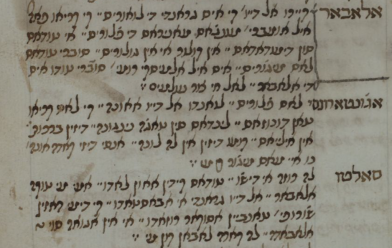CES
32. La agonía del amante Rosa mia (CES)
The opening of this song, “Conğa mía conğa mía / chichek de mi cabeza” (“conğa” means “rosebud” in Turkish; the name of the song on the record label is “Rosa mia”) is a formulaic stanza that opens other Sephardic songs (e.g. Amato Levy 1987, p. 144; Hemsi 1995, no. 108; PF 143/01, 049/03 recorded from Ester Akoen, Salonica). However, the continuation in this version is unique in the literature. The closest versions were published or recorded by Attias (1972, no. 56; NSA Y 09490 by Alegra Attias-Alhanati; Y 09493 [2] by Moshe Attias; Y/09506 by Shlomo Venezia), and they are all from Salonica. The melody appears in a musical transcription by Idelsohn (1923, no. 484) with the same opening stanza. This transcription is very close to the melody in this recording as well as to the one transcribed in Attias (1972, p. 282). With a high degree of probability, this is a Greek or Turkish melody (Idelsohn described it as “Turkish, known in Jerusalem”), whose model appears in several other Sephardic songs (e.g. Venturoso mancebo by Haim Effendi, 2008, CD III, no. 4). Other Sephardic songs starting with “Conğa mía, conğa mía, / chichek de mi cabeza” and appearing in commercial recordings have a different melody (e.g. Yasmin Levy 2000, no. 5).
Conğa mía, conğa mía,
chichek de mi cabeza.
La luna me s’escureció,
la mar se hizo preta.Si es que me vo a muerir
mira lo que hacites.
Puedes casarte de mi vida
es para tirar confites.Si es que me vo a muerir
te rogo y te namoro.
Me quitas la ridá del jep
me tapas boca y ojos.Boca y ojos vo a tapar
me v’asentar d’enfrente.
El huevo me toca a mί
las passas a tu gente.Un pájaro me vo hazer
de donde ‘sta volando.
Me va arrivar a la bajo
malata con el […?] tanco.







